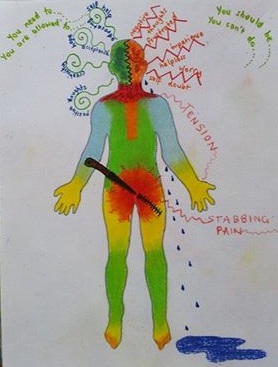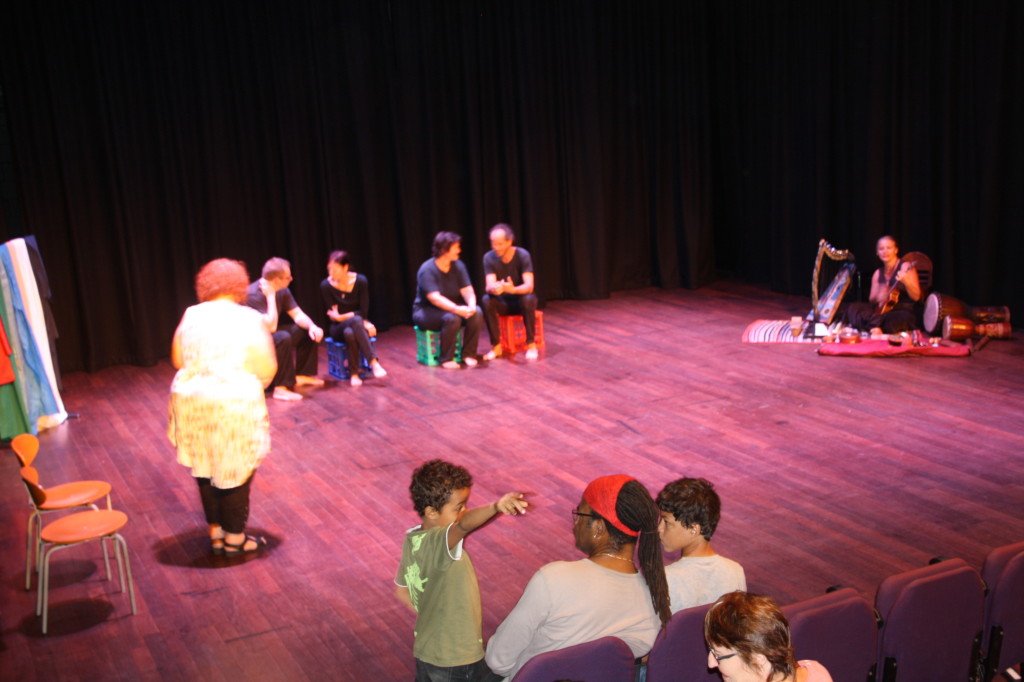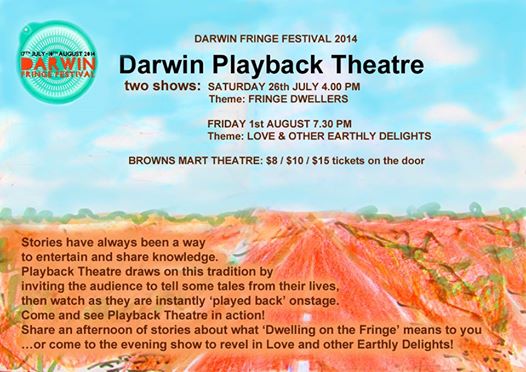This week I sliced my finger. I was cleaning our ceiling fan blades, something I’d been trying to do for months. In the first instance, I fell into a pit of anger and frustration because I couldn’t finish the job. Ruminating, I stared at the ceiling, clasping a bunch of tissues which filled up with blood over my painful little pinkie. To the distracting but somewhat comforting beat of my throbbing pulse, I eventually pulled myself off the sulky road I was heading down, and contemplated how I might now constructively fill in the rest of my day. I decided to do something I enjoyed – some drawing or painting or both. Half an hour later, I consulted the first aid book locked away in my brain and decided a dose of Betadine and a couple of strong bandaids was all that was required.
Ironically, this is the same process I went through when I popped a disc sweeping up the floor in January. However this injury was much more serious and I haven’t yet fully recovered. I lead an active lifestyle and see the glass half full most of the time, but this pushed me to my absolute limits. The mental anguish of being bed bound is much worse than physical pain and I could have easily slipped into depression, if anger and frustration had gotten hold. I began thinking about the things I consciously do to give myself the best chance of healing without letting the world crumble down around me. Here are my 3 tips for healing from chronic pain, keeping your spirit intact!
- Listen to what your body is telling you to do.
The voices of ‘experts’ in treatment have valuable things to offer but not the only answer. My doctor, physio and chiropractor all had different opinions about my back injury and how it should be treated. The conflicting advice I received was confusing and my back seemed to get worse. Eventually, I refused to do some of the exercises because it didn’t feel right. I had to force my doctor to refer me for an “unnecessary” MRI which revealed a type of degenerative disc disease that he knew nothing about it. I ended up doing my own research to find a path of recovery for myself. In desperation for pain relief, I found an acupuncturist/physio who confirmed what I suspected all along. Don’t do any exercise that causes pain! He cut me back to one exercise and that was the beginning of my recovery, five months after my initial injury. I know if I ever do this kind of injury again, I have a first aid plan, based pretty much on “Treat Your Own Back”. I also know I have a really strong gut instinct which steers me in the right direction.
- Put your mind on a leash.
This is the hardest thing to do when you are in constant pain. Give it some slack and your mind will take off, leaving you feeling powerless. Worry and self doubt tried to convince me that I might never be healthy and strong again. I was also plagued with guilt for lying around and not contributing to the functioning of our family household. A turning point for me came when I created a Body Drawing. On one of my worst days, I lay down and quietly meditated on how my body felt for a few minutes, noticing the pain, tension, and other sensations. Then I took a piece of paper and drew what I had noticed. Looking objectively at what I had drawn, I knew I had to take positive action to not let my mind dominate, as it was contributing to avoidable tension in my body and inhibiting recovery. The Body Drawing is a good exercise to repeat several times over the course of recovery, so that you can appreciate the positive steps forward you are taking and that change however slight, is happening.
- Find creative ways to keep doing things you enjoy.
One of the most difficult things with chronic pain is not being able to do things you love. For three months, I wasn’t able to sit. I either had to lie on my back or stand. And standing for long periods of time wasn’t good either. I became teary and upset at not being able to do the things I normally enjoy like gardening and bike riding (I had just bought a new mountain bike).
Now when I look back, I am grateful for the down time I was forced to take. I taught myself how to set up a business and website and even went to some free business seminars, standing on my feet throughout the whole training. I wrote my first blog flat out on my back because my thoughtful hubby bought me a bed desk.
It’s important to stay connected to the things you are passionate about, within your limitations. I couldn’t work in the community garden, but I still went along and chatted to the gardeners doing all the hard yakka. I took up new pursuits like Universal Healing Meditation and Playback Theatre which have added value to my healing process. Think creatively and you can find a way, perhaps with a little help from some painkillers now and again!
The Mind Game of healing from chronic pain or injury is a constant challenge. Just keep strong hold of that leash, and breathe.



